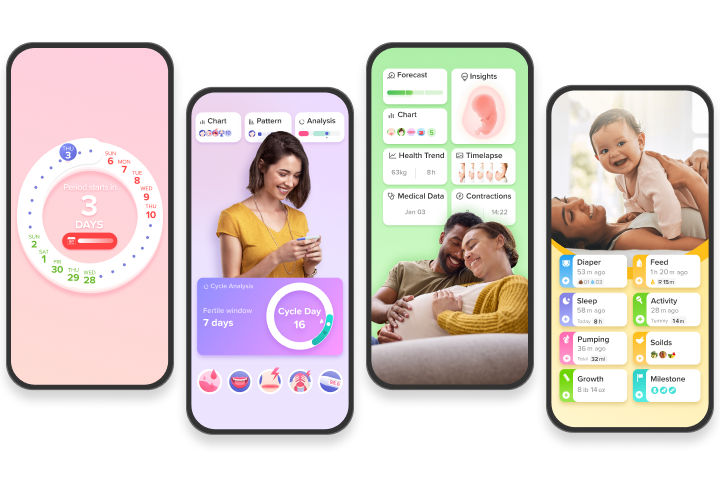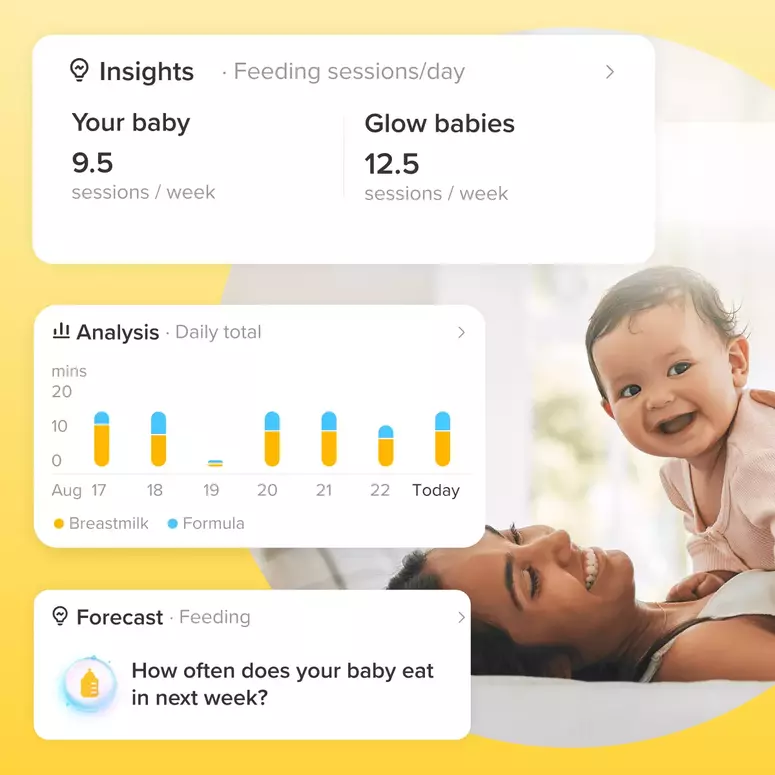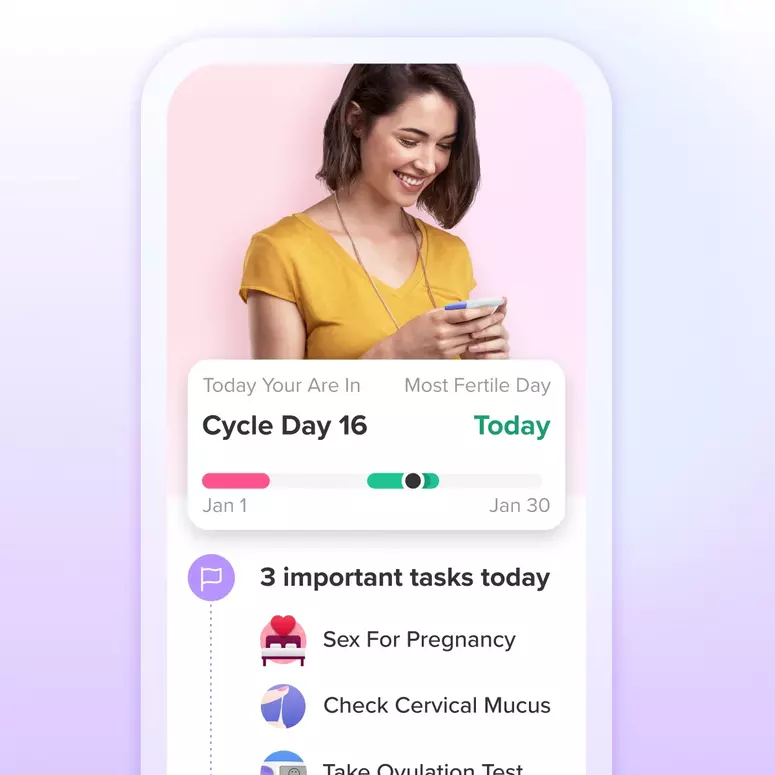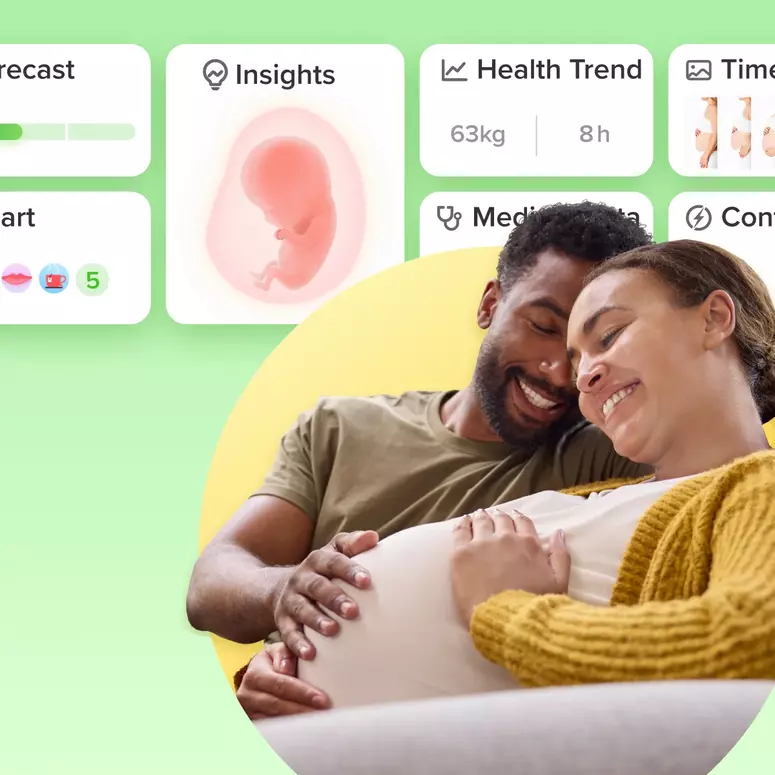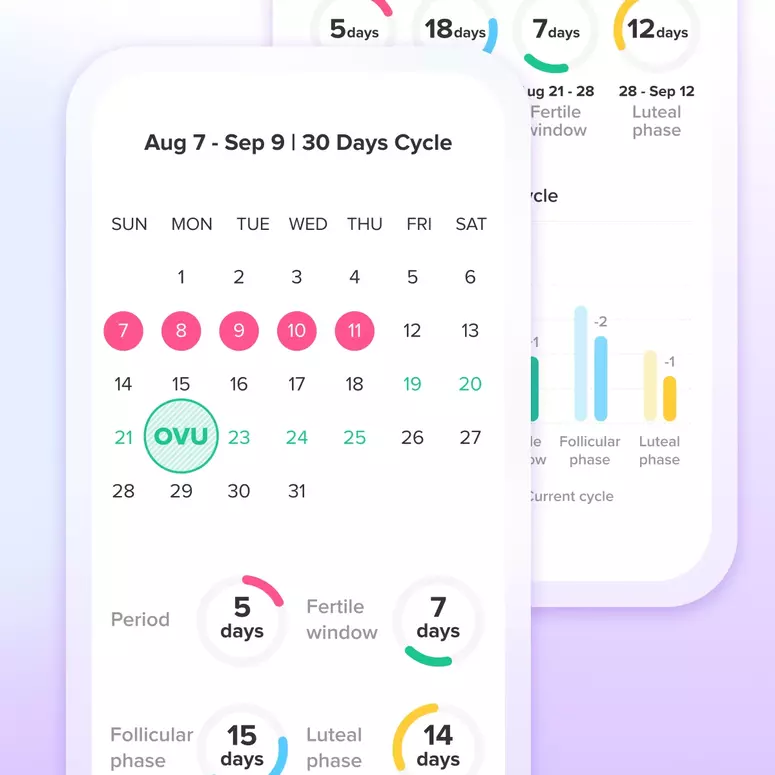Learn the Basics Behind Basal Body Temperature (BBT)
Measuring your BBT, also known as basal body temperature, is a key aspect of Glow and many other fertility apps.
The important thing to realize is that charting your BBT will only help you figure out if you’ve ovulated after it’s already happened. Here’s how: once you’ve ovulated, your basal body temperature will shift up by at least four-tenths (0.4) of a degree Fahrenheit. If your temperature stays elevated for at least 3 days after that shift, then you know that you’ve ovulated. Congrats!

It’s pretty nifty tool for determining pregnancy, too. If your BBT is elevated for more than 15 days without a period, there’s good chance that you might be pregnant.

Alternatively, if your BBT dips, then your period is most likely on its way.

So, what's the science behind it?
Your BBT is influenced by hormonal changes throughout your cycle. In the first half, estrogen is the star of the show, keeping your BBT lower. However, after ovulation, progesterone steps in, causing a slight rise in body temperature. This rise, though only around 0.4 to 1 degree Fahrenheit, is like your body's secret signal that ovulation has occurred.
How do you measure BBT?
Every morning, as soon as you open your eyes, before you stir or get out of bed, you take a special thermometer called a Basal Thermometer – which has 2 decimal places (ie. 97.67 degrees F) after the period rather than the normal one decimal place (ie. 97.7 degrees F) – and take your temperature. You can take it orally, vaginally, or rectally.
It’s best to set an alarm and do this at the exact same time every morning, including weekends.
Should you chart?
Yes and no.
Yes–every woman should at least try at some point to track their BBT for a few months. When done correctly, it can be a huge relief to know that you’ve ovulated when you see that temperature dip followed by a spike. It might even save you money on pregnancy tests.
And remember, tracking your BBT isn’t just for those trying to conceive. It's a powerful tool for understanding your body’s rhythms and overall reproductive health.
There are other reasons to chart as well - Glow learns quickly from your BBT data. If you have a short luteal phase or other kinds of gynecological issues going on, charting your BBT can help you discover these patterns, and Glow will point these out, too, so that you can talk about them with your doctor.
And last but certainly not least, measuring BBT puts you in control of your body. So much of fertility is passive, but tracking your BBT is proactive. It will help you learn more about your body, which is always a good thing.
So why no?
Because charting BBT doesn’t work for everyone. Some women work night shifts, which can make charting a lot trickier. Some women drink or take certain medications. Others have insomnia or trouble falling asleep. Any of these can make your BBT chart look like it got hit by an earthquake!
For all of those reasons, measuring BBT might just unnecessarily add to stress levels. So keep in mind that although BBT charting is wonderful, it’s just one tool in your reproductive arsenal. Tracking cervical mucus, cervical position, or taking OPKs are other options that might work just as well (or sometimes even better). You can see all of these log items on Glow’s cycle charts as well, even if you do not track BBT.
In the next few articles, Glow will dive deeper into BBT charting and how to make it work for you.
Achieve your health goals from period to parenting.
